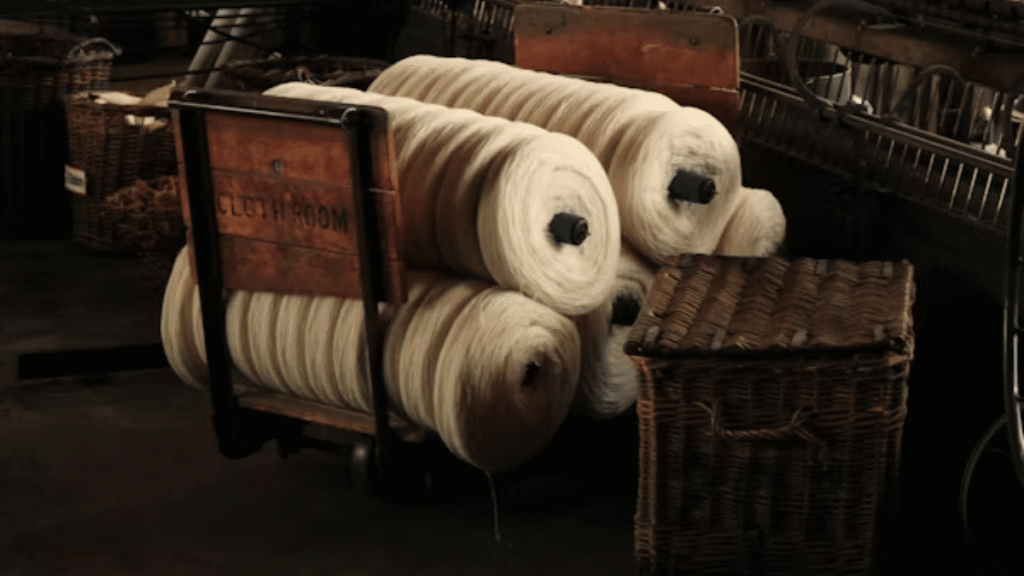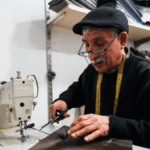Wollmatten—a word that echoes both tradition and transformation—has emerged as one of the most fascinating innovations in modern materials science and sustainable design. Within the first breath of its meaning lies the essence of warmth, craftsmanship, and technology. Essentially, Wollmatten refers to a new-generation wool-based fabric or matting material that redefines how we view natural fibers in architecture, fashion, and lifestyle. Its rise signals a broader shift toward eco-conscious materials that balance luxury, performance, and sustainability.
In recent years, Wollmatten has moved far beyond being a mere textile term. It represents a concept: the union of traditional wool artistry and modern engineering. In homes, it’s seen as a premium insulating layer; in fashion, as a breathable yet stylish textile; in sustainability circles, as a biodegradable alternative to synthetic mats and fabrics. This article delves deeply into what Wollmatten is, how it works, its production process, uses, environmental benefits, market growth, and the cultural narrative shaping its future.
Understanding Wollmatten: The Concept and Composition
The term Wollmatten originates from the German language—literally translating to “wool mats.” Historically, it described thick layers of felted wool used for insulation or cushioning. However, in today’s context, Wollmatten encompasses a wide range of wool-based materials designed through advanced manufacturing techniques such as needle-punching, thermal bonding, or bio-layer lamination.
At its core, Wollmatten is built from pure or blended wool fibers, sometimes combined with natural resins or plant-based binders. The result is a dense, resilient material that retains the natural elasticity and thermal control of wool while offering structural strength for varied applications.
Wool’s inherent properties—breathability, moisture absorption, and flame resistance—make Wollmatten a standout among modern materials. Whether used in soundproof walls, winter garments, or eco-friendly floor insulation, its performance aligns perfectly with contemporary sustainability goals.
A Brief History of Wool Transformation
For centuries, wool has been revered as one of humanity’s earliest renewable materials. Shepherds in ancient Europe relied on felted wool mats for shelter and clothing, recognizing its unique ability to regulate temperature and resist wear. By the Industrial Revolution, wool transitioned from handmade artistry to mass production, but it also lost much of its natural essence amid synthetic alternatives.
Wollmatten brings wool back into focus—revived through 21st-century engineering. It reclaims the raw integrity of natural wool while adapting it for new uses.
As one textile researcher once said, “Wool has always been intelligent. We just needed smarter ways to use it.”
The Science Behind Wollmatten
The science of Wollmatten lies in the fusion of material innovation and environmental design. Each fiber undergoes careful processing to maintain structural integrity while enhancing its functionality.
Key Technical Processes:
- Mechanical Felting: Interlocking fibers using heat and pressure to create dense, stable mats.
- Needle Punching: Using barbed needles to entangle fibers for uniform texture and thickness.
- Thermal Bonding: Activating natural lanolin or biopolymers to create cohesive layers without synthetic glue.
- Surface Treatment: Applying organic oils or eco-resins to increase durability and resistance.
These techniques produce a material that is durable yet soft, breathable yet insulating—a rare duality in the world of textiles.
Table 1: Core Properties of Wollmatten Compared to Traditional Wool
| Property | Traditional Wool | Wollmatten (Engineered Wool) |
|---|---|---|
| Breathability | High | High with improved regulation |
| Moisture Absorption | Moderate | Enhanced with structural uniformity |
| Thermal Resistance | Natural insulation | Optimized for energy efficiency |
| Durability | Subject to wear | Extended lifespan due to processing |
| Sustainability | Natural but limited reuse | Fully recyclable and biodegradable |
Wollmatten in Architecture: The Future of Sustainable Insulation
One of the most groundbreaking uses of Wollmatten is in architectural design. Homes and offices now employ wool mats as thermal and acoustic insulators. This shift represents a departure from petroleum-based foams toward bio-based materials that actively improve air quality.
Unlike fiberglass or polystyrene insulation, Wollmatten maintains humidity balance, absorbs pollutants, and is safe to handle. Its biodegradability also ensures minimal waste during renovation or demolition.
Architects increasingly prefer Wollmatten in:
- Eco-housing projects emphasizing natural ventilation
- Passive homes requiring low-energy thermal control
- Recording studios for acoustic absorption
- Historic restorations where natural materials are essential
As one architect in Vienna put it, “Wollmatten doesn’t just insulate walls—it insulates conscience.”
The Role of Wollmatten in Modern Fashion
Fashion, too, has rediscovered the magic of wool through Wollmatten. Designers are blending this engineered fabric with organic cotton, silk, or bamboo fibers to create apparel that is both luxurious and sustainable.
The wool’s microstructure naturally adapts to temperature, making it ideal for jackets, activewear, and accessories. Moreover, its soft, matte texture lends an understated elegance to contemporary fashion lines.
Why Designers Love Wollmatten:
- It’s eco-friendly and traceable to sustainable farms.
- The texture feels natural yet technologically refined.
- It offers year-round comfort—cool in summer, warm in winter.
- It aligns with ethical fashion narratives gaining global traction.
Table 2: Applications of Wollmatten Across Industries
| Industry | Application | Benefits |
|---|---|---|
| Architecture | Wall & roof insulation | Energy saving, eco-safe |
| Fashion | Jackets, footwear, accessories | Breathable, durable, aesthetic |
| Automotive | Seat padding & interior lining | Noise absorption, thermal comfort |
| Furniture | Cushions, mattresses | Hypoallergenic, biodegradable |
| Packaging | Protective material | Compostable, reusable |
Environmental Impact and Sustainability
Wollmatten exemplifies what sustainable innovation looks like when guided by circular economy principles. Each product is designed to minimize carbon emissions across its lifecycle. The sourcing of wool often relies on ethical sheep farming, and the production methods avoid synthetic adhesives.
Moreover, the biodegradability of Wollmatten ensures that even when disposed of, it returns to the earth without harming ecosystems. The low-energy production process further reduces dependency on fossil fuels.
Environmental Benefits:
- Fully biodegradable within months
- Zero microplastic shedding
- Carbon-neutral production potential
- Promotes regenerative wool farming
“The planet doesn’t need more plastic comfort—it needs natural intelligence,” said an environmental analyst commenting on the rise of biodegradable textiles.
Economic Influence and Market Outlook
The global demand for sustainable materials has placed Wollmatten in a favorable economic position. As industries transition away from synthetic compounds, the need for renewable alternatives has expanded exponentially.
Economists predict that eco-textile revenues, with Wollmatten leading the charge, could grow by 30% over the next decade. The trend is particularly strong in Europe, where regulations encourage eco-friendly manufacturing.
The cost efficiency of Wollmatten also appeals to producers—it reduces long-term waste management expenses and qualifies for sustainability incentives.
The Cultural and Aesthetic Appeal
Beyond its technical and environmental merits, Wollmatten resonates with a deeper cultural symbolism. It bridges the gap between old-world craftsmanship and new-world innovation. The feel of wool carries nostalgia; its new application reflects futurism.
From Nordic minimalism to Japanese-inspired design, Wollmatten’s adaptability aligns with global design philosophies that favor simplicity, authenticity, and longevity. The texture tells a story—of nature, resilience, and reinvention.
Technological Integration and Smart Textiles
Recent advancements are pushing Wollmatten into the realm of smart textiles. Researchers are experimenting with conductive fibers and moisture sensors embedded within wool mats to create adaptive surfaces that regulate heat or track environmental data.
Imagine a winter coat made from Wollmatten that adjusts insulation automatically based on body temperature or a wall panel that monitors indoor humidity. These applications hint at a future where wool isn’t just natural—it’s intelligent.
Bullet Summary: Why Wollmatten Stands Out
- 100% biodegradable and recyclable
- Superior insulation and sound absorption
- Chemical-free and non-toxic production
- Luxurious texture with natural resilience
- Versatile across architecture, fashion, and interiors
- Symbol of the sustainable material revolution
Global Adoption and Innovation Hubs
Countries such as Germany, Switzerland, and New Zealand have become innovation hubs for Wollmatten development. Universities collaborate with textile labs to refine wool-fiber processing, while startups focus on commercial scaling.
Governments are also investing in policies that support the wool industry’s modernization, ensuring shepherd communities remain integral to future economies. The movement is global—fusing heritage and high-tech sustainability.
Consumer Awareness and Lifestyle Integration
Consumers today are more informed and selective. They value transparency, origin, and ecological footprint. Wollmatten products satisfy these demands perfectly. Whether it’s a mat underfoot, a jacket on the shoulders, or an insulated wall, each application carries the story of mindful consumption.
The future lifestyle is not about minimalism alone—it’s about meaningful material choices. Wollmatten represents one such meaningful evolution.
Future Prospects: From Homes to Space
Wollmatten’s adaptability may even extend beyond Earth. Ongoing research suggests that natural fiber composites could play a role in space habitats due to their thermal control and radiation resistance. While that vision remains distant, it reflects the extraordinary potential locked within simple wool fibers.
In the coming decade, expect to see Wollmatten in high-tech buildings, automotive interiors, and even advanced wearable systems.
Conclusion
Wollmatten is more than just a material—it’s a movement toward a responsible and harmonious relationship with nature. By combining tradition and innovation, it demonstrates how simple materials can inspire complex change.
From sustainable architecture to ethical fashion, Wollmatten is proof that progress need not sacrifice purity. It embodies the story of our times: a world seeking balance, comfort, and conscience in every layer of life.
As one sustainability advocate said, “Innovation doesn’t mean replacing nature—it means rediscovering how to live in tune with it.”
Wollmatten, in its quiet yet profound way, teaches us exactly that.
FAQs
1. What exactly is Wollmatten made of?
Wollmatten is primarily made of pure wool fibers, sometimes blended with plant-based binders or organic resins to enhance strength and structure.
2. How is Wollmatten different from regular wool?
Unlike traditional wool fabrics, Wollmatten undergoes advanced processing like needle-punching and thermal bonding, making it more durable and versatile for industrial use.
3. Is Wollmatten environmentally friendly?
Yes, it’s fully biodegradable, free from toxic chemicals, and produced using energy-efficient methods aligned with sustainable development goals.
4. Where can Wollmatten be used?
It’s used in architecture for insulation, in fashion for garments, in automotive interiors, and even in eco-friendly packaging solutions.
5. Can Wollmatten replace synthetic materials entirely?
While not a universal substitute yet, Wollmatten provides an excellent eco-friendly alternative in many sectors, reducing dependency on non-renewable synthetics.







